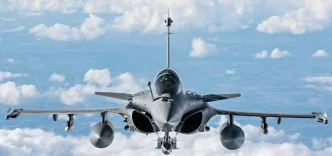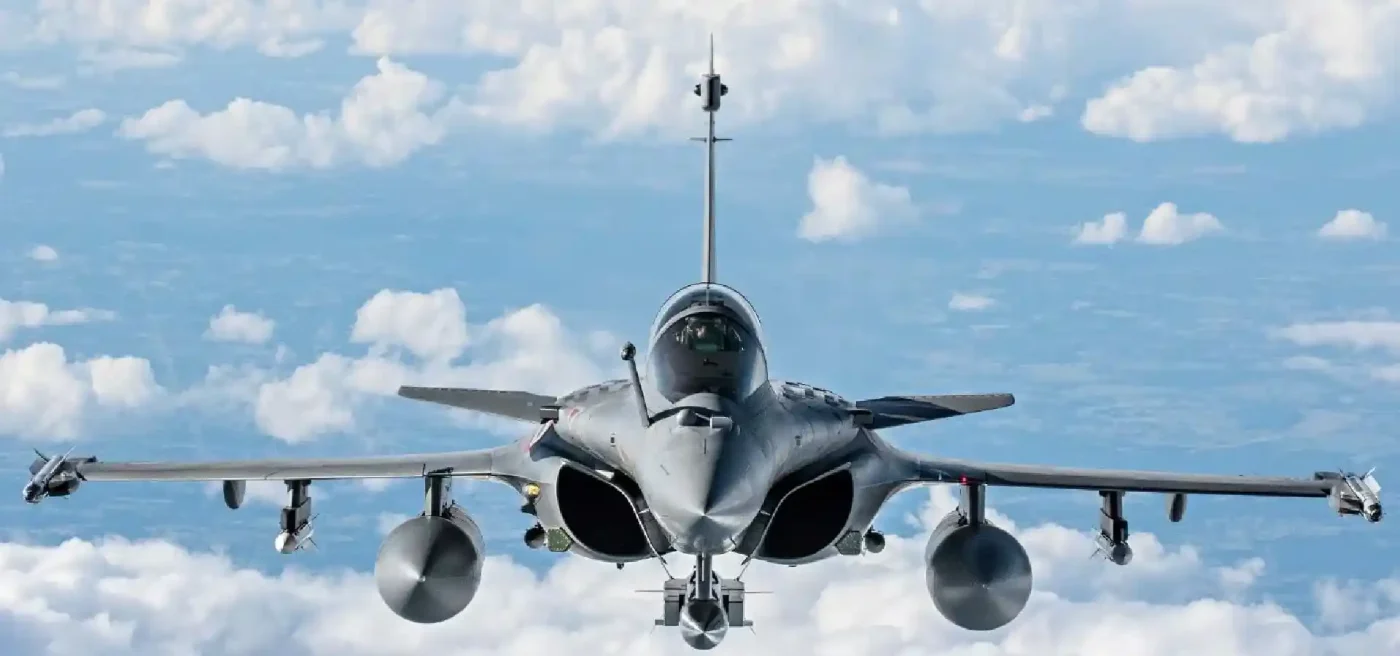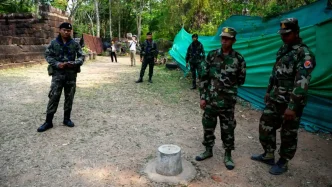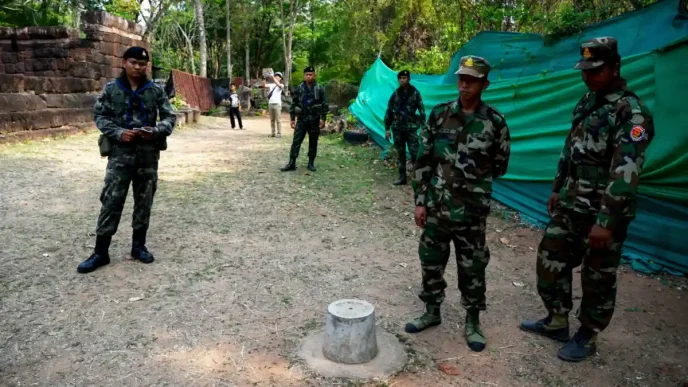Indonesia’s ambition to bolster its air defense capabilities with advanced weaponry, such as the recently acquired Rafale fighter jets from France, has sparked a critical debate about the nation’s readiness to secure its skies. While the procurement of cutting-edge aircraft signals a push toward military modernization, experts and policymakers are raising alarms over a fundamental issue: Indonesia’s lack of full sovereignty over its national airspace, particularly in strategic border regions like the Strait of Malacca. This paradox—investing in high-cost assets while key airspace remains under foreign control—underscores a deeper challenge in building an effective national air defense system.
The Rafale Acquisition and Regional Tensions
Indonesia’s decision to purchase Rafale jets, finalized in a multi-billion-dollar deal with France, is part of a broader effort to strengthen its military presence amid rising regional tensions. The aircraft, widely regarded as a pinnacle of NATO-standard technology, are intended to enhance the Indonesian Air Force’s combat capabilities. However, recent events in South Asia, particularly the clash between India and Pakistan over Kashmir, have cast a spotlight on the limitations of such acquisitions when not supported by a comprehensive defense framework. Reports indicate that Pakistan’s Air Force, using Chinese-made J-10C jets, successfully engaged Indian Rafale aircraft, raising questions about the effectiveness of advanced platforms in isolation.
This incident has reverberated across Southeast Asia, prompting Indonesia to reassess its defense priorities. While the Rafale jets represent a significant upgrade, their strategic value is diminished without the ability to operate freely in critical zones. For Indonesia, the Strait of Malacca—a vital maritime chokepoint and a hotspot for geopolitical maneuvering—remains a glaring vulnerability. Under a 2022 bilateral agreement with Singapore, airspace over this region, including the Riau Islands, is managed by Singapore for air traffic services, a arrangement that has persisted for 25 years with potential for extension. This dependency limits Indonesia’s ability to conduct patrols, training, and enforcement operations in an area central to its national security.
Sovereignty as the Bedrock of Defense
The issue of airspace control is not merely logistical; it strikes at the heart of national sovereignty. According to Indonesia’s Law No. 1/2009 on aviation and the 1944 Chicago Convention, a state holds exclusive authority over its airspace. Yet, the operational control delegated to Singapore creates a stark contradiction for Indonesia’s defense strategy. Without sovereign authority, investments in advanced systems like the Rafale risk becoming symbolic rather than functional, akin to owning state-of-the-art equipment without the freedom to deploy it where it matters most.
Military analysts argue that air defense is not just about hardware but an integrated ecosystem encompassing radar networks, command-and-control structures, airbases, and surveillance intelligence. For Indonesia, the absence of operational control over key airspace undermines the effectiveness of these components. “Air defense is only as strong as the sovereignty behind it” said a former Indonesian Air Force official during a recent defense seminar in Jakarta. “Without the ability to train and operate in our own skies, we’re building a system on shaky ground.”
This sentiment is echoed by strategic thinkers who emphasize the need for long-term planning and geographic awareness in defense development. Unlike political initiatives tied to short electoral cycles, a robust air defense system requires decades of consistent policy, inter-agency coordination, and a national doctrine rooted in operational independence. Indonesia’s current trajectory, marked by high-profile acquisitions without corresponding systemic reforms, risks prioritizing prestige over practicality.
The Strait of Malacca: A Strategic Flashpoint
The Strait of Malacca, one of the world’s busiest shipping lanes, is a linchpin of Indonesia’s security and economic interests. Yet, the airspace above it, from sea level to 37,000 feet, remains outside Indonesia’s direct control. This arrangement, while framed as a pragmatic solution for air traffic management, poses significant challenges for military operations. The Indonesian Air Force is constrained in its ability to conduct routine patrols or respond swiftly to potential threats in this zone, a limitation that could prove costly in a crisis.
The strategic importance of the Strait cannot be overstated. It serves as a gateway for global trade and energy supplies, making it a potential target for geopolitical rivals or non-state actors. For Indonesia, regaining control over this airspace is not just a matter of national pride but a critical step in safeguarding its territorial integrity. However, achieving this goal requires navigating complex diplomatic waters. Renegotiating the 2022 agreement with Singapore demands a delicate balance of assertiveness and cooperation, ensuring that mutual interests are respected while prioritizing Indonesia’s sovereign rights.
Learning from Regional Examples
Indonesia could draw valuable lessons from other nations that have successfully integrated advanced weaponry into cohesive defense systems. Pakistan’s recent performance in the Kashmir conflict, for instance, demonstrates the importance of doctrine, training, and operational infrastructure alongside hardware. The country did not merely acquire J-10C jets from China; it developed supporting systems to maximize their impact, from pilot training to real-time intelligence integration. This holistic approach enabled Pakistan to challenge a technologically superior adversary, offering a blueprint for Indonesia to emulate.
Closer to home, countries like Vietnam have prioritized sovereignty in their defense strategies, ensuring that military investments align with operational autonomy. Indonesia, by contrast, faces the risk of strategic impotence if it continues to acquire assets without addressing the foundational issue of airspace control. The Rafale jets, while impressive, cannot deliver their full potential if restricted from flying in the very zones they are meant to protect.
Financial and Political Dimensions
The financial implications of Indonesia’s defense spending also warrant scrutiny. The Rafale deal, valued at billions of dollars, represents a significant commitment of public resources. Converted to local currency, the cost is staggering—estimated at over 200 trillion Indonesian Rupiah (US$12.5 billion), based on exchange rates as of May 24, 2025. For a developing economy, such expenditures must be justified by tangible security gains, not merely symbolic achievements. Critics argue that funds allocated to high-cost platforms could be better spent on building radar networks, enhancing cybersecurity for air defense systems, or training personnel—elements that form the backbone of a functional defense apparatus.
Politically, the issue of airspace sovereignty is a contentious one. Successive administrations have grappled with balancing diplomatic relations with Singapore against domestic calls for greater control over national territory. Public sentiment, often shaped by a desire to shed colonial legacies, leans toward reclaiming full authority over Indonesia’s skies. Yet, policymakers must tread carefully to avoid straining ties with a key regional partner. The path forward lies in leveraging international law and frameworks like the Chicago Convention to make a compelling case for renegotiation, framed as a mutual benefit rather than a unilateral demand.
A Path Forward for Indonesia
Addressing Indonesia’s air defense dilemma requires a multi-pronged approach. First and foremost, the government must prioritize diplomatic efforts to regain control over critical airspace, particularly in the Strait of Malacca. This process should be grounded in international aviation law and pursued with a spirit of collaboration, ensuring that regional stability remains paramount. Simultaneously, technical capacity-building—such as investing in indigenous radar systems and training programs—can lay the groundwork for operational independence.
Militarily, Indonesia must shift its focus from platform-centric acquisitions to system-centric development. This means integrating existing assets, including the Rafale jets, into a broader network of surveillance, command, and response mechanisms. Collaboration with domestic defense industries and academic institutions could also foster innovation tailored to Indonesia’s unique geographic and strategic needs.
As Indonesia navigates these challenges, the stakes extend beyond national borders. A robust air defense system, underpinned by sovereignty and strategic foresight, is essential not only for the country’s security but also for maintaining stability in a region marked by competing interests. The road ahead is long and complex, but with political will and a commitment to systemic reform, Indonesia can transform its air defense ambitions into a reality. For now, the question remains: will the nation prioritize the foundation of sovereignty over the allure of advanced weaponry?
















